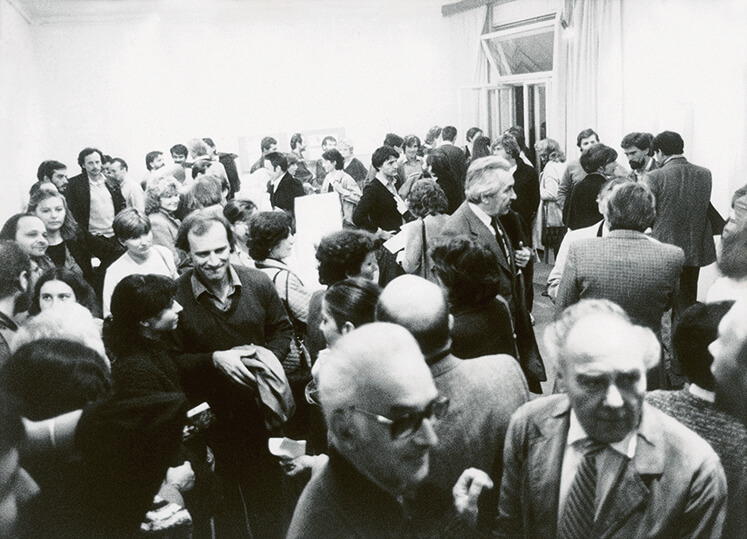
The foreword from the exhibition catalogue Forum Gallery Studio, 1981
Zvonko Maković
When Peruško Bogdanić appeared with his first solo show in the spring of 1980, it was clear that his works did not come into being either fortuitously or simply. The classical sculptural materials he used, the iron, bronze, and alabaster, heightened the feeling of finish and maturity of his softened geometrical forms. There was nothing extraneous in these works: the smooth prismatic bodies finished with a ridgy crest or unexpectedly stretched and expanded, creating soft recesses in the upper parts. Some turned the vertical axis at the beginning of growth into a taut obliquity that bore a slightly twisted mass. On the whole, the sculptures were strung together into cycles of sorts. The artist, thus, with a series of similar forms, explained minimal plastic differences, whether it was the axis, treatment of the surface, some material change, or even the problem of balance. It was precisely in these fundamental problems of form that Bogdanić showed superior mastery of his medium. Sometimes in this superiority, there would be saturation: in their extreme refinement, vital and sinewy forms seemed just a bit too classical for an artist just starting. Before these works, Peruško Bogdanić had produced several wire mesh constructions. The hollow cylindrical form twisted and bent and thus created an appearance of tension of the inner volume that corresponded freely with the external spatial layer through the open, transparent membrane. These wire meshes were like spatial drawings-temporary, inconstant and fragile. The “poor” material spoke directly about the focus of the sculptural problem: the tension of specious volumes. The artist produced these provisionally named wire constructions with brief and concise operations leaving the material raw and not concealing its “paucity”. This is why I mention the works from the first Bogdanić exhibition, the softer geometrical volumes on the one hand and the slightly older wire works on the other. Looking at the new sculptures, we can see the roots that go back to these two sources. The assuaged minimalism grew into necessary forms that replaced their predecessors’ finish and crystal clarity with roughness, an almost organic strength. The conditions became more fraught; the axis of the sculpture is no longer so limber and condensed, and its raw vitality is conspicuous. The differences in the treatment of the surface are the most obvious. There are no more smooth polished surfaces in these works. Indeed, the artist left visible tool marks, and a visual touch and the feeling of the elementary substantiality of the sculpture were explained. The works were made of plaster, wood, mortar, and bronze. In their design, they are not concealed behind smooth and opaque membranes. With their rugged exteriors, they attempt to heighten the original state of the material and offer a sense of immediacy to the shaping process. And it is precisely in this rawness, this “paucity” of the material, and the impression of immediacy, that we can recognize a similarity with the previous works of wire mesh. Once again, concise and direct speech with raw materials is noted. The identical statues done in bronze and plaster tell us the meaning of the importance of materials. In earlier works, the surface was polished to a shine; now, it is always matte. All this suggests a critical turning point in which it is possible to recognize traces of earlier experiences. Summing up these experiences is only one component in these genuinely new and truly integral works of Bogdanić.









